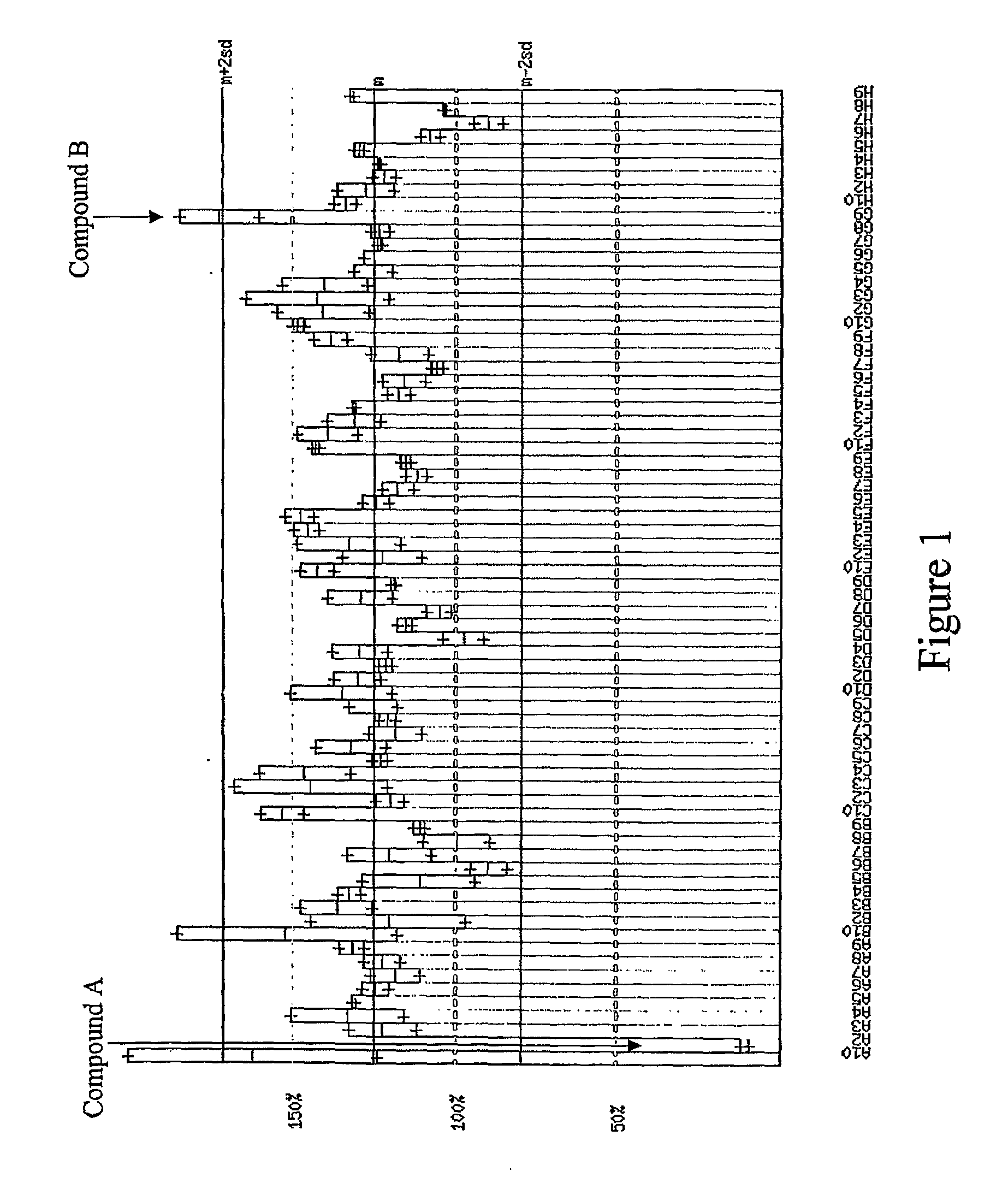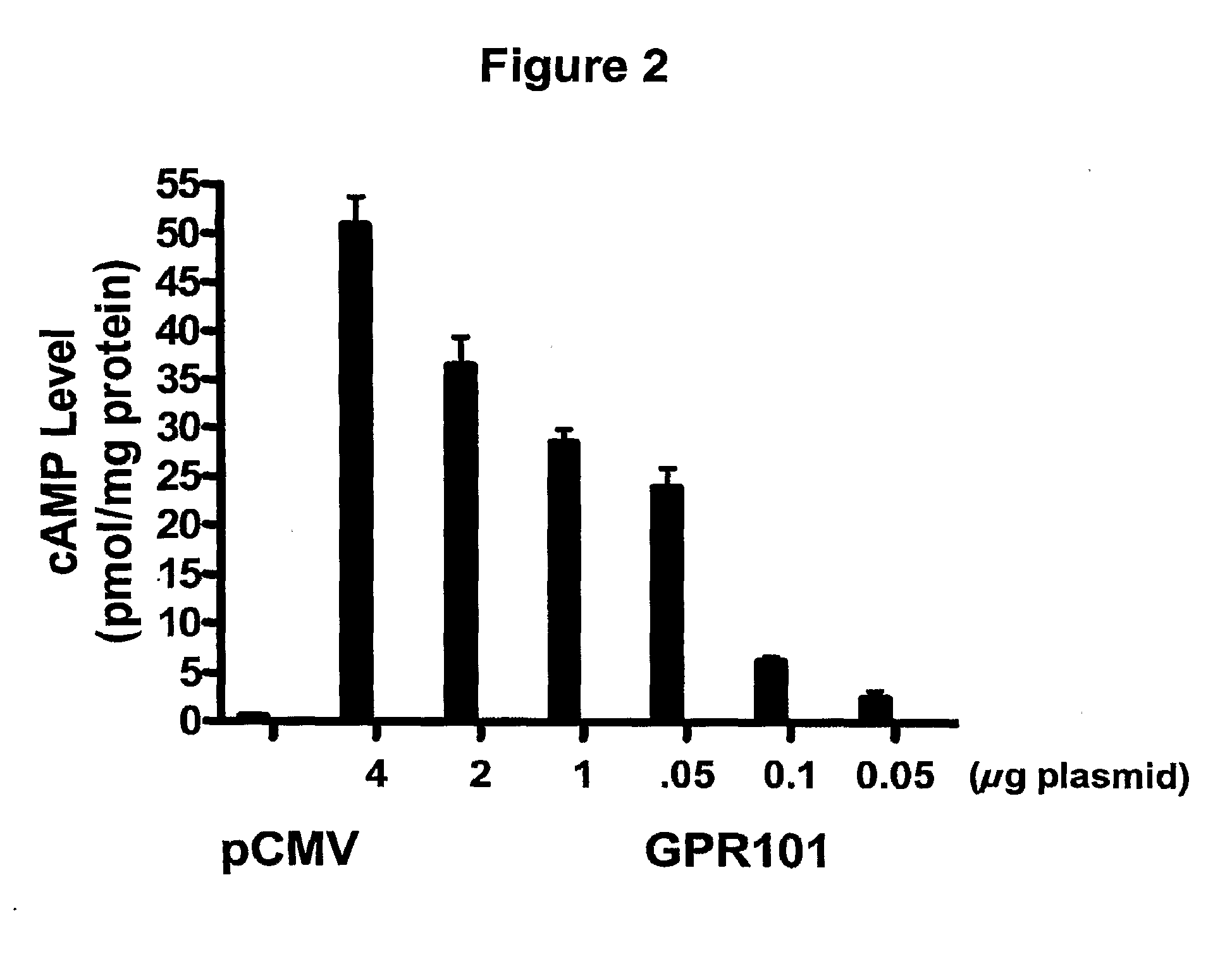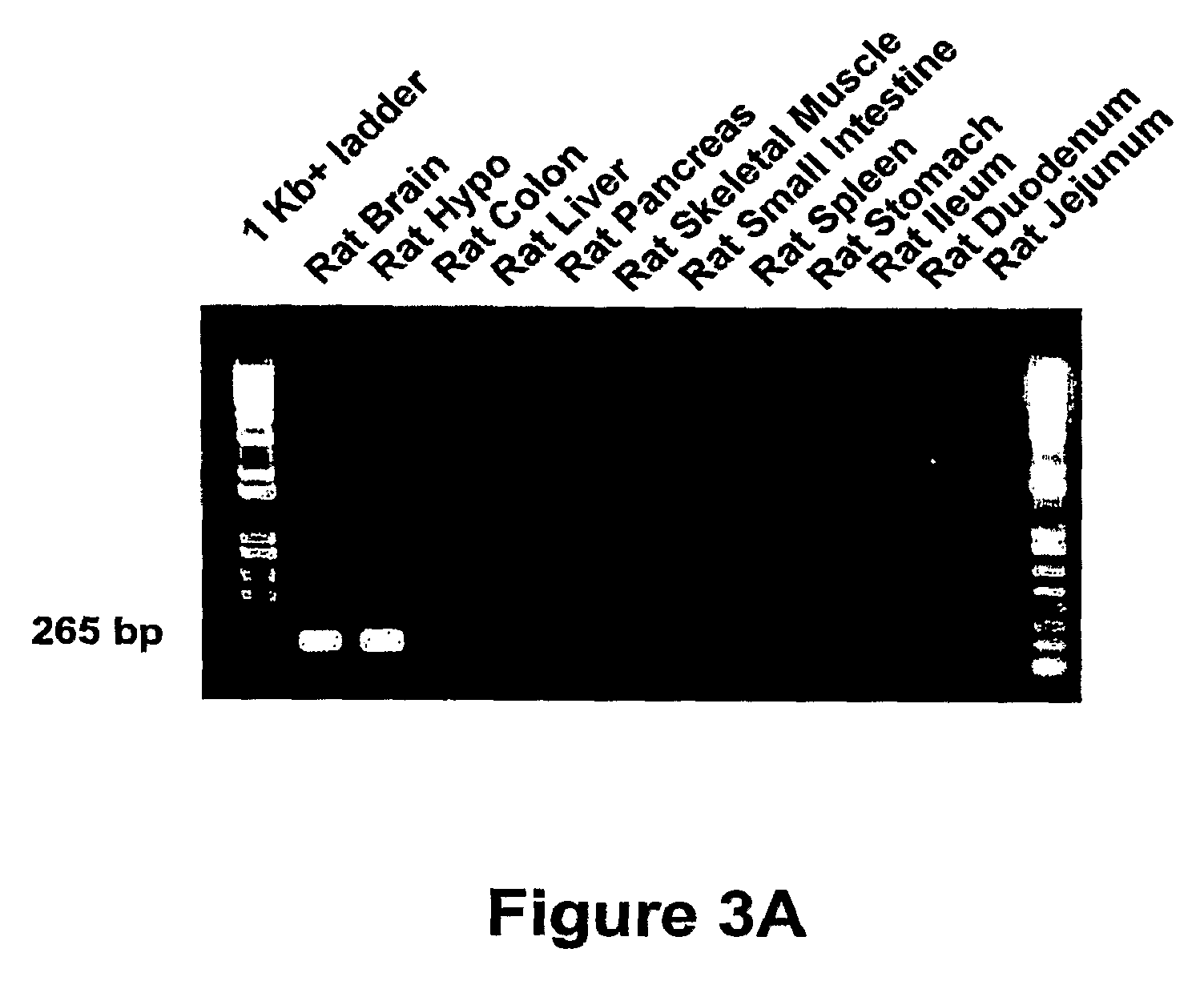Use of gpr101 receptor in methods to identify modulators of hypothalamic proopiomelanocortin (POMC)-derived biologically active peptide secretion useful in the treatment of pomc-derived biologically
a technology of proopiomelanocortin and pomc, which is applied in the field of using gpr101 receptor in methods to identify modulators of hypothalamic proopiomelanocortin (pomc)-derived biologically active peptide secretion, can solve the problems of increasing the risk of cardiovascular diseases, not taking into account, and obesity, so as to promote and stabilize the receptor, effectively stabilize the receptor
- Summary
- Abstract
- Description
- Claims
- Application Information
AI Technical Summary
Benefits of technology
Problems solved by technology
Method used
Image
Examples
example 1
Full-Length Cloning of Endogenous Human GPR101
[0531]Polynucleotide encoding endogenous human GPR101 was cloned by polymerase chain reaction PCR) using primers 5′-GCTGTTGCCATGACGTCCACCTGCAC-3′ (SEQ ID NO: 7; sense) and 5′-GGACAGTTCAAGGTTTGCCTTAGAAC-3′ (SEQ ID NO: 8; antisense) and human genomic DNA (Clontech) as template. TaqPlus Precision DNA polymerase (Stratagene) was used for the amplification by the following cycle with step 2 to step 4 repeated 35 times: 94° C., 3 minutes; 94° C., 20 seconds; 65° C., 20 seconds; 72° C., 2 minutes; 72° C., 7 minutes.
[0532]A 1.5 Kb PCR fragment was isolated and cloned into the pCRII-TOPO vector (Invitrogen) and completely sequenced using the ABI Big Dye Terminator kit (P.E. Biosystem). The nucleic acid sequence of human GPR101 is set forth in SEQ ID NO: 1; the encoded amino acid sequence of human GPR101 is set forth in SEQ ID NO: 2.
example 2
Receptor Expression
[0533]A variety of cells are available to the art for the expression of proteins including, but not limited to, yeast cells, mammalian cells and melanophore cells. In certain embodiments, yeast cells are utilized. In certain embodiments, mammalian cells are utilized. In certain embodiments, melanophore cells are utilized. Of the mammalian cells, CHO, COS-7, MCB3901, 293 and 293T cells are particularly preferred, although the specific mammalian cell utilized can be predicated upon the particular needs of the artisan. See infra as relates to melanophores, including Example 9.
[0534]a. Transient Transfection
[0535]On day one, 4×106 293 cells per 10 cm dish are plated out. On day two, two reaction tubes are prepared (the proportions to follow for each tube are per plate): tube A is prepared by mixing 4 μg DNA (e.g., pCMV vector; pCMV vector comprising polynucleotide encoding a GPCR of the invention, etc.) in 0.5 ml serum free DMEM (Gibco BRL); tube B is prepared by mixi...
example 3
Assays for Determination of GPCR Activation (e.g., Screening Assays)
[0538]A variety of approaches are available for assessing activation of a GPCR of interest, or “target” GPCR. The following are illustrative; those of ordinary skill in the art are credited with the ability to determine those techniques that are preferentially beneficial for the needs of the artisan.
[0539]1. Membrane Binding Assays: [35S]GTPγS Assay
[0540]When a G protein-coupled receptor is in its active state, either as a result of ligand binding or constitutive activation, the receptor couples to a G protein and stimulates the release of GDP and subsequent binding of GTP to the G protein. The alpha subunit of the G protein-receptor complex acts as a GTPase and slowly hydrolyzes the GTP to GDP, at which point the receptor normally is deactivated. Activated receptors continue to exchange GDP for GTP. The non-hydrolyzable GTP analog, [35S]GTPγS, can be utilized to demonstrate enhanced binding of [35S]GTPγS to membran...
PUM
| Property | Measurement | Unit |
|---|---|---|
| Fraction | aaaaa | aaaaa |
| Energy | aaaaa | aaaaa |
| Level | aaaaa | aaaaa |
Abstract
Description
Claims
Application Information
 Login to View More
Login to View More - R&D
- Intellectual Property
- Life Sciences
- Materials
- Tech Scout
- Unparalleled Data Quality
- Higher Quality Content
- 60% Fewer Hallucinations
Browse by: Latest US Patents, China's latest patents, Technical Efficacy Thesaurus, Application Domain, Technology Topic, Popular Technical Reports.
© 2025 PatSnap. All rights reserved.Legal|Privacy policy|Modern Slavery Act Transparency Statement|Sitemap|About US| Contact US: help@patsnap.com



